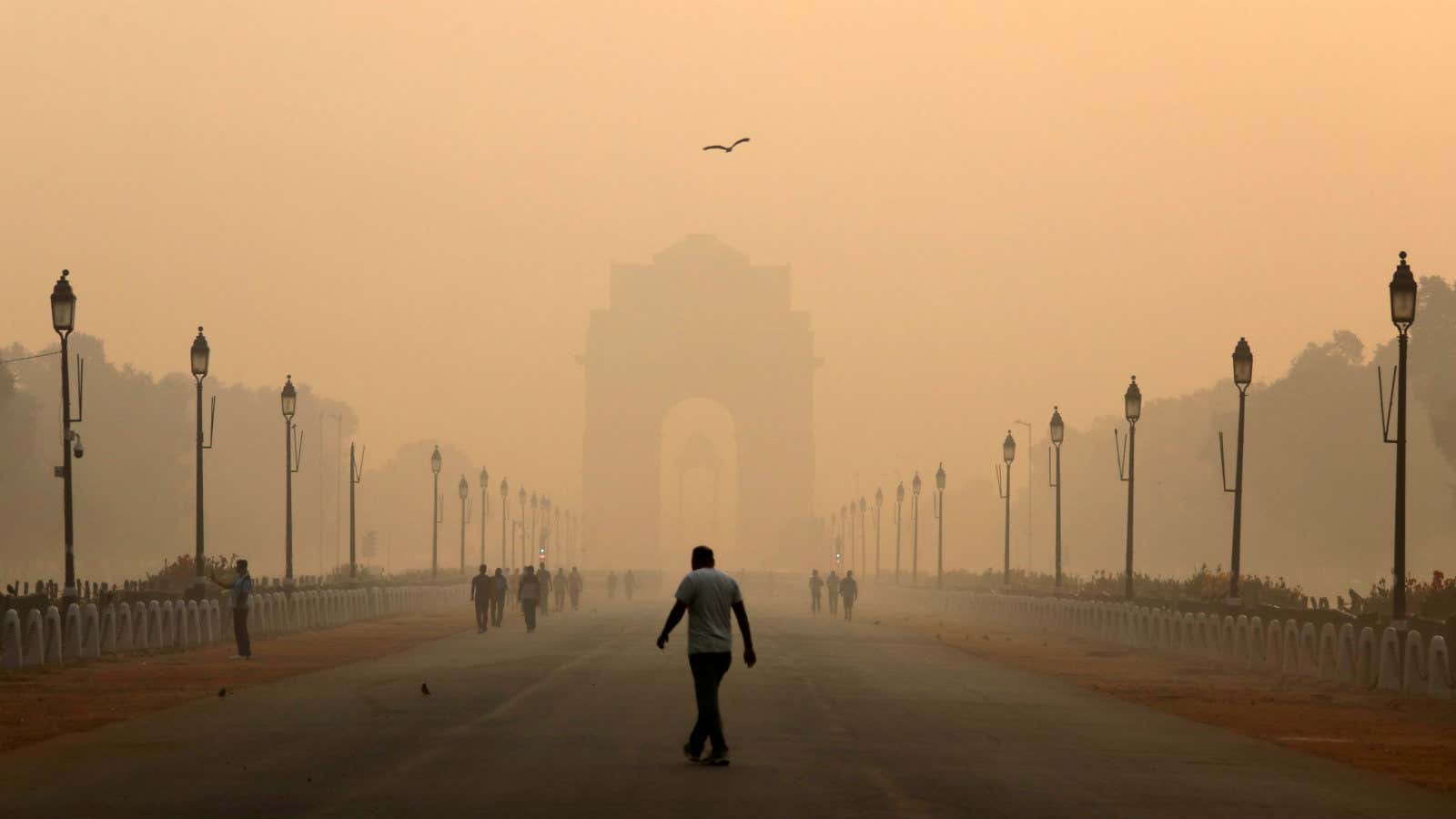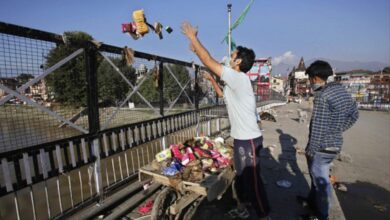Delhi’s Massive Pollution Crisis: 30%–40% Increase In Respiratory Issues.
Delhi's air pollution crisis, driven by stubble burning, vehicle emissions, and industry, is worsening respiratory issues. Solutions include stricter regulations, sustainable practices, better public transport, and public awareness to improve air quality and make the city more liveable.
In the past people could just go out for a little breath of fresh air, but here in the big metropolitan area of Delhi the air is full of chemicals that are quite poisonous and can affect a person’s health in the short run. The question of air pollution in Delhi NCR was introduced in 1995 through an environmental activist and lawyer M.C. Mehta. The Supreme Court had, in an order in 1995, determined that the Delhi Pollution Control Committee was solely responsible for controlling the pollution in Delhi.
.webp)
As of 2024, Delhi, the capital of India, is home to over 33 million people living in a densely populated area of just 1,484 km2, reflecting a 2.63% growth from 2023, and has experienced severe air pollution, notably during the Great Smog of November 2016, when PM2.5 levels soared to 999 micrograms per cubic metre—far exceeding the safe 24-hour peak limits of 15 micrograms per cubic metre.
What is happening, and how can air pollution affect you?
The main culprit is PM2.5, a dangerous combination of solid particles and liquid droplets, comprising of dust, soot, metals, organic compounds, smoke, odours, ash, and pollen, which poses a serious health concern. These are a few of the sources of this extremely small solid particle: industrial emissions, automobile emissions, and wood burning. PM2.5 is also called respirable particles and since it does not easily settle and breathe deeper than large particles, it is a menace to the sensitive groups like children and births. WHO’s annual air quality standard is 42.6X lower than national capital’s present alarming PM2.5 concentration, highlighting the dire need for action to protect public health and improve air quality.

Delhi’s air quality has dropped to “very poor” and may soon reach the “severe” category. Breathing in contaminated air increases the intensity of chronic respiratory cases including asthma, and chronic obstructive pulmonary disease, shortness of breath and coughing. Sulphur dioxide which is among the pollutants discussed above causes eye irritation headaches and affect the central nervous system where nitrogen dioxide is another pollutant that affects human health. Prolonged exposure leads to lung cancer, heart disease, learning disorders in kids, and many other grown-up diseases like multiple sclerosis, diabetes, epilepsy, etc.
Why is air pollution happening?
Despite having 342 sq. km of green cover, combating air pollution in the city has become a herculean task. Several factors are contributing to this environmental decline, with some of the major causes being:
Stubble burning: After the rice harvests, the farmers of Punjab and Haryana set fire to agricultural residue, which contributes enormously to the air pollution in Delhi especially when winter sets in. Combined with meteorological situations when other pollutants are already stagnating near the ground, the smoke from these fires turns into the city with the property of making the air quality worse by introducing dangerous pollutants and particulate matter into the environment.

Transportation: Motor vehicles contribute 36% of Delhi’s air pollution which precisely positions them as one of the causes of pollution in the city. In turn, 83% of carbon monoxide emissions come from vehicles and these sources are directly associated with densely populated areas. Court ordered bus service restrictions have further boosted road development and ownership of private vehicles which undoubtedly has enhance pollution levels.
Industrial activity: Approximately 90% of all the SO2 emissions actually stem from industrial sources, hence factories and other production facilities in the city all contribute to the pollution. Besides accruing to formation of acid rains and environmental effects, these operations release a number of dangerous gases that pollute the air and act as major health risks.

Meteorology: Pollutant dispersal in the atmosphere is greatly influenced by temperature and wind speed. Low wind velocities lead to the accumulation of pollutants, on the other hand high velocity enhances the dispersion of contaminants hence coming with low concentration. The vertical structure by temperature has a significant effect for gross and chemical transformations: cooler temperatures in inversion conditions prevent rising of pollution to upper levels, degrading air quality, while warm and turbulent conditions allow pollution dispersion upward.
Legal interventions to combat air pollution
The Centre was recently bashed by the Supreme Court for weakening the Environmental Protection Act through changes that have created a situation where enforcement became more difficult, specifically revolving around pollution from stubble burning in national capital. The apex court of the country observed that the amended Sec 15 replaces punitive attempts with financial penalties, weakening the effectiveness of the law. In response, the Centre promised to finalise regulations in 10 days to make sure the Act becomes “fully operational.” Additionally, the Supreme Court directed the Centre and the state governments of Delhi, Punjab, Haryana, Uttar Pradesh, and Rajasthan to submit compliance reports after the Diwali holiday.
Meanwhile, the Delhi High Court has ordered licensed fireworks vendors in the capital to halt sales until January 1, 2025. However, questions are still arose regarding to the effectiveness of this measure to create that much of difference. In another measure, the Delhi government resorted to the reintroduction of the odd even scheme which specified that cars with one part of the number plate odd numbered could run on odd dates of November 13 to 20 ,2023 but due to recent rain and subsequent decrease in pollution levels this did not happen. For example, in 2016 as for the odd even scheme, CNG cabs, women drivers, electric and hybrids as well as two-wheelers were exempted and in 2019 also.

Also, GRAP which stands for Delhi NCR’s emergency response plan, is implemented in four steps with respect to air pollution. Stage I (poor) air bans garbage burning, creates dust control measures, and ensures regular waste collection. Stages II and III impose restrictions on diesel generators, coal, and firewood in hotels while increasing bus and metro services and halting construction activities. Currently, Stage IV is in effect for “severe plus” or “hazardous” air quality, restricting truck entry to CNG/LNG vehicles and banning diesel-operated cargo trucks. GRAP aims to eradicate the deteriorating air quality in the region.
The Future of Delhi and air pollution
Delhi’s pollution problem cannot be solved easily; a multifaceted strategy is required. Increased adherence to sector emissions control procedures should also be part of it, better practices in waste disposal; increased incentive for use of natural resources; and expansion of public transportation facilities. It is equally important to control stubble burning for which the farmers should be given definite alternative solutions and sustainable methods of farming should be encouraged. Regional collaboration is essential for managing transboundary pollution, and comprehensive plans must be established to address the different causes that contribute to poor air quality.
Since air pollution requires community intervention, addressing the issue requires the authorisation of the community. Since pollution has an origin, it has certain dangers people must be made aware of in order to avoid it and this gives the necessary input to enable them avoid or reduce exposure to it. Implementation through lobbying awareness makes the enforcement of regulations effective and the activities like tree planting an awareness on waste reduction make people responsible. People of Delhi need to become more aware so that they could contribute to improving the situation with air quality of the city.

That is why Delhi’s capacity to be a liveable city in the future depends on on-going efforts to clean up the air and decrease pollution emissions. To achieve this, the kind of cooperation with the neighbouring regions in tackling cross-boundary pollution must be boosted alongside policy intervention strategies that must be implement at local, provincial and national levels. In the future there should be provisions for innovative approaches and sustainable initiatives to the management of resources required for the increase in enhancement and quality of life of the people of Delhi.




